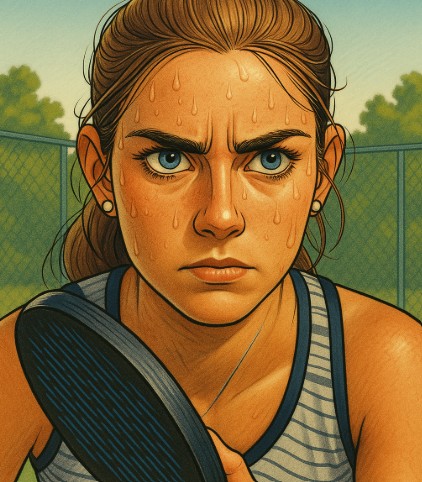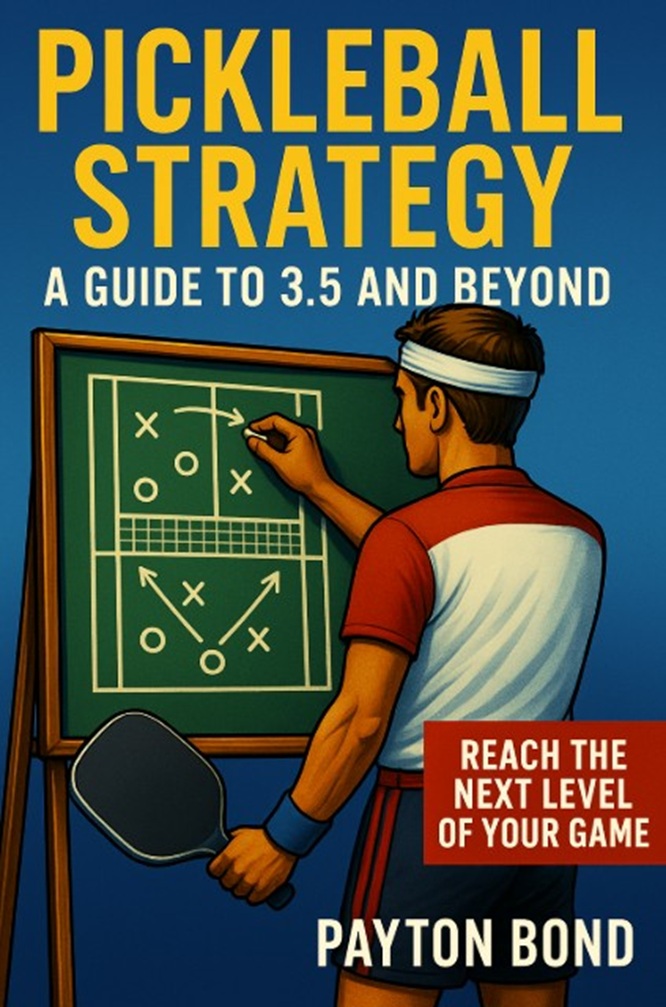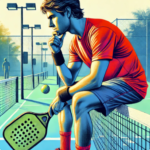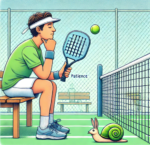
Resilience is the backbone of both mental and physical strength. It’s what allows players to bounce back from setbacks, refocus, and keep pushing forward. In pickleball, just like in life, resilience can turn a tough moment into an opportunity for success.
Do you ever find yourself standing at the baseline, ready to return serve, but still thinking about the mistake you just made? Maybe you’re talking to yourself out loud, replaying what went wrong, still muttering about it as you get ready for the next point. Or perhaps you’re frustrated with your partner, convinced that you’re losing because of them. Before you know it, you’re not focused on the next shot, and you make another mistake.
This is where resilience comes in.
What Does Resilience Look Like in Pickleball?
In pickleball, resilience is a player’s ability to recover quickly after losing a point, making a mistake, or struggling with a dip in performance. It’s about staying mentally tough, maintaining focus, and pushing through the challenges that will inevitably arise in a match.
Why Does Resilience in Pickleball Matter?
Imagine you’re trailing by a few points. A player lacking resilience might panic, get frustrated, or start playing recklessly. A resilient player, on the other hand, sees this as a chance to regroup, adjust their strategy, and fight their way back into the game. Instead of letting frustration take over, they stay composed, analyze what’s happening, and make smart adjustments. Resilient players also manage momentum well. When their opponent starts gaining the upper hand, they don’t just hope things turn around. They recognize the shift and actively make changes, whether that’s adjusting their serve, hitting with more spin, or focusing on shot placement.
Mistakes are inevitable in any game, but resilient players don’t let unforced errors define them. Whether it’s a footwork mistake, a misjudged ball, or a poor shot selection, they process it quickly, learn from it, and move on. A losing streak can be especially frustrating, but resilient players don’t let it shake their confidence. Instead, they see every match as a fresh start, reflect on what went wrong, identify areas for improvement, and come back with a clear game plan. They are also adaptive. If an opponent starts exploiting a weakness, they adjust their approach, whether that means changing shot selection, altering court positioning, or shifting their mindset to stay one step ahead.
Resilience Test
Do you give up when you are down by many points in a game, or do you keep fighting? I see players stop playing with focus and literally throw in the towel when they’re losing by a lot. One of the best feelings I’ve had playing pickleball is coming back from a big deficit. I’m talking about an 8-1 score or a game with a significant margin. Coming back in this situation is a sign that you have resilience and can focus. If you are giving up in these situations, don’t do it. Work on being resilient by fighting until the end.
Staying Focused Under Pressure
When the pressure is on, like at game point, resilient players don’t let distractions take over. They tune out negative thoughts, ignore the scoreboard, and focus entirely on their next shot. This ability to stay composed under pressure is what often separates good players from great ones.
Final Thoughts
Building resilience in pickleball doesn’t happen overnight, but it can be developed with the right mindset. It starts with setting small, achievable goals in practice, learning to replace negative self-talk with productive adjustments, and recognizing that you can’t control everything, but you can control how you respond. The best players aren’t the ones who never make mistakes, but the ones who recover from them the fastest. With a strong sense of resilience, you can turn setbacks into stepping stones for success on the court.

Check out Payton Bonds new eBook!
Pickleball Strategy – A Guide to 3.5 and Beyond
See it on Amazon.

👤 Follow Payton Bond
All Star and Top Contributor on multiple Facebook Pickleball Forums.
Contributor at TheKitchenPickle.com.
Visit Payton Bonds Facebook Page







